Some friends of ours recommended a visit to Dunster and I have to say we were not disappointed. Dunster can best be described as a quaint little village, its streets lined with cottages in a variety of pastel shades, one next to the other, like so many flavours in an ice-cream parlour. The village has its origins in medieval times, although Iron Age remains have been unearthed in the surrounding hills, and it is mentioned in the Domesday Book that was published in 1086. Dunster is situated within Exmoor National Park and is surrounded by sweeping hills which boast a diverse range of wildlife. The village used to be an important centre of cloth and wool trade in Somerset but, after the decline of that industry in the 18th century, Dunster was locked in a time warp - which enables the visitor to fully appreciate its medieval architecture while ambling along its picturesque streets.

High on a hill (called a tor) overlooking the village is Dunster castle. This is where we started our visit, so this blog post will follow our footsteps around the castle and the village.
Dunster Castle
The first castle, which was made of timber, was built by William de Moyon (or de Mohun) around the time of the Norman conquest of England in 1066. The castle remained in the hands of the de Moyons until the 14th century, when the family sold the castle and its land to the Luttrells. The Luttrell family lived in the castle, making countless alterations to it, for 600 years until they handed it over to the National Trust in 1976.

Entrance to Dunster castle is via an arched entryway. Immediately to the right of the entryway, one can find the stables. The next stop after the stables is up a small flight of steps that takes you to the dank and dark oubliette dungeon. The oubliette, from the French oublier (to forget), is literally a place where prisoners were chained and then conveniently forgotten.

In fact, no traces of the oubliette can be seen since access to it is through a trap-door in the floor. The place gave me the shudders but such was the reality of the past. Perhaps its not the most auspicious place to start the tour but, moving on to the castle itself the oubliette was, well, quickly forgotten.

Once inside the castle's outer hall, the tour took us to the Drawing Room followed by the Inner Hall and the Dining Room. (Thankfully, photography was allowed). As I glanced at the beautiful objects on display, the crystal and china, and the hand-crafted furniture, it quickly became apparent that Dunster Castle was not some austere fortress but a once much-loved, comfortable family home. My thoughts instantly travelled several thousand miles to California, as I knew that Elizabeth (whom we all know as the Vintage Contessa) would have enjoyed touring Dunster Castle as much as I was going to.





The second floor of the castle is reached by the Grand Staircase - carved entirely out of solid blocks of elm in 1680. Up on this floor are the Morning Room, the bathroom, a number of bedrooms and the Leather Gallery. The Leather Gallery used to be the banqueting hall and gets its name from the leather hangings depicting the story of Anthony and Cleopatra covering its walls. Leather is apparently ideal for a banqueting hall as it does not hold the smell of food in the same way fabric tapestries would.
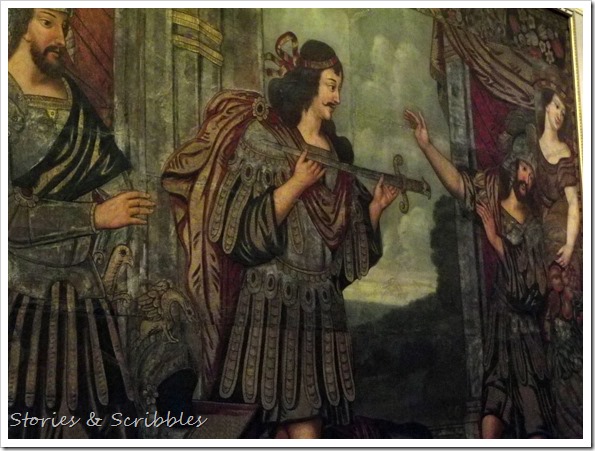

My favourite bedroom was the King Charles Bedroom, simply because this was the bedroom a young Charles II stayed in when he had visited Dunster Castle. The room comes with its own secret passage, which further adds to its allure.


Another staircase leads back downstairs to the less formal Gun Room, Billiard Room, the Office and the Library. The office (called the Justice Room, as Mr. Luttrell was a Justice of the Peace) seemed like the perfect place to call one's own and I could really imagine myself sitting there and writing eccentric stories or endless letters to wonderful friends. As for the Library, well, who wouldn't love to sit in this sumptuous room with a good book, and spend a couple of hours having a quiet read while the butler, footmen, cook et al got the tedious tasks done?

The castle tour ends in the Conservatory which leads off of the library and visitors exit the building on the south terrace which overlooks the lush Somerset countryside.

The castle grounds abound with blooms of all types and colours and make for a really pleasant walk. Needless to say, Dunster Castle has its own resident ghosts and we learnt a bit more about them in the crypt, which was the last stop for us before we exited the castle grounds. From there we walked to the bottom of the hill and took the road on the left which leads to the Water Mill.




The Water Mill
It takes a good 20 to 30 minutes (depending how fast you walk) to get to the water-mill. The road goes through the woods and leads downhill all the way. The vegetation was so profuse and the leaves on the plants so huge, that this woodland area reminded me of a tropical forest. Coming from an island that in summer is akin to a desert, all the abundant greenery made me giddy with pleasure.

I almost wanted to get lost forever amongst the fifty shades of green that surrounded me. To be honest, I did wander off and lose my way for a few minutes, but then, in true English style, it started to rain, so I made my way to the water-mill past an old foot-bridge that crosses the river at this point.

The Water-mill (also known as Castle Mill) is a restored 18th century mill. The current building dates from 1780 - although a mill has stood on this site since medieval times. The mill is still used to grind flour and is powered by two overshot wheels which may be viewed on the mill's upper storey. The adjacent wagon house and stables have been converted into a cafeteria and the ground floor of the mill houses a National Trust shop that sells products created by artisans from the area.
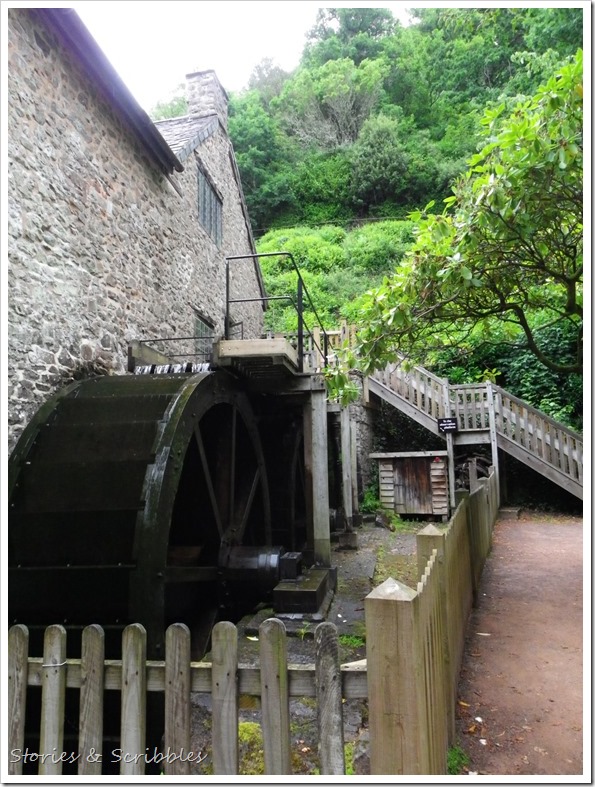


On leaving the mill, we immediately came to Dunster village.
Dunster Village

It is hard from someone like me not to fall madly in love with a place like Dunster, which couldn't be prettier if it were the figment of someone's imagination. The villagers seems to have conspired together to make sure that anyone visiting Dunster will not easily forget it.

The village streets are lined with brick houses, some in their natural state, and others gaily painted in pastel shades that seemed to be trying to compete with the profusion of blooms that spill over every window-sill and carpet every garden.

I admit that I also loved peeking into some of the house windows because of the unusual objects that greeted my curiosity. The winding lanes spill out onto West Street, which is just around the corner from the Priory Church of St George.
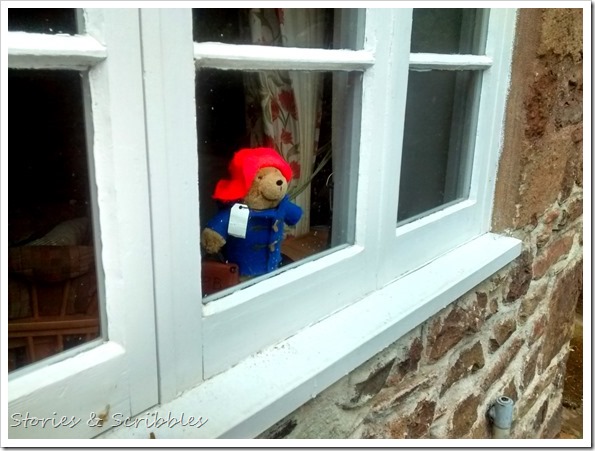

Priory Church of St George

The current edifice is from the 15th century but evidence of workmanship from the 12th and 13th century remain. This small country church has a beautifully carved wooden wooden ceiling and a carved rood screen that separated the parishioners from the monks. I found its sombre interior, in sharp contrast to the more flamboyant Maltese churches, perfectly suited for prayer and meditation.

I also absolutely loved the graveyard located just outside the church, with the grass-covered graves and ancient headstones pock-marked with moss and lichen.

It was absolutely impossible to find anything about Dunster that I didn't like. From the church, we made our way towards High Street.
High Street
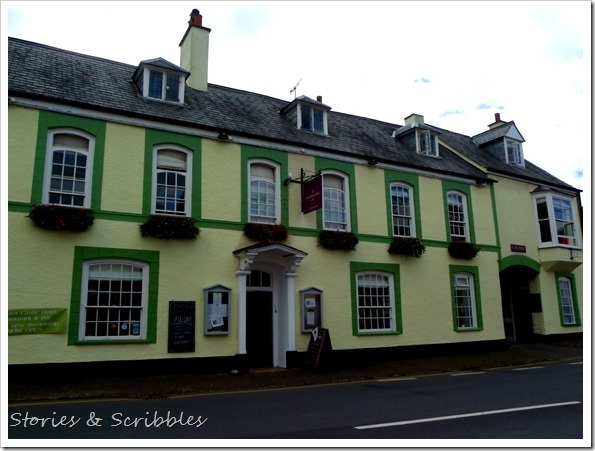
High Street is where most of the artsy little shops are located. Unfortunately, since it was Sunday when we visited, a lot of them were closed. One store that was open was David Deakins' Studio. We were mesmerised by his colourful paintings which seemed to exude their own particular light, as if the bright Mediterranean sun was shining on these very English scenes - truly remarkable pieces of art.


We continued walking along High Street, peering into the shop windows and enjoying the mild weather till we got to the Yarn Market.

The Yarn Market
The Yarn Market, at one end of High Street, is a wooden octagonal-shaped building that was at the centre of the wool and cloth trade in Dunster until the 18th century. It was built in the early 1600s to protect traders from the elements and is still in almost perfect condition to this day. From the Yarn Market, Dunster Catle is clearly visible, high up on its hill, seemingly surveying the village below.

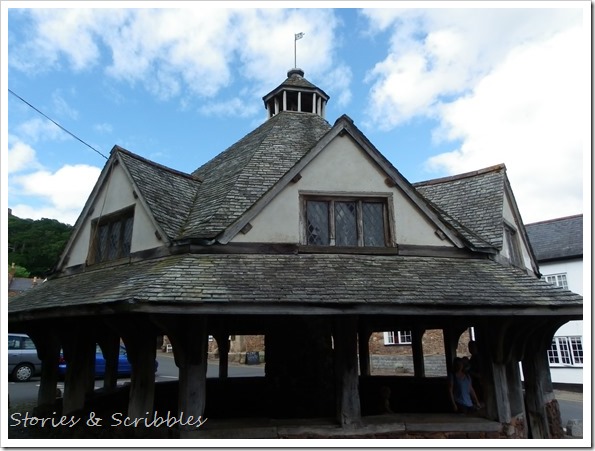
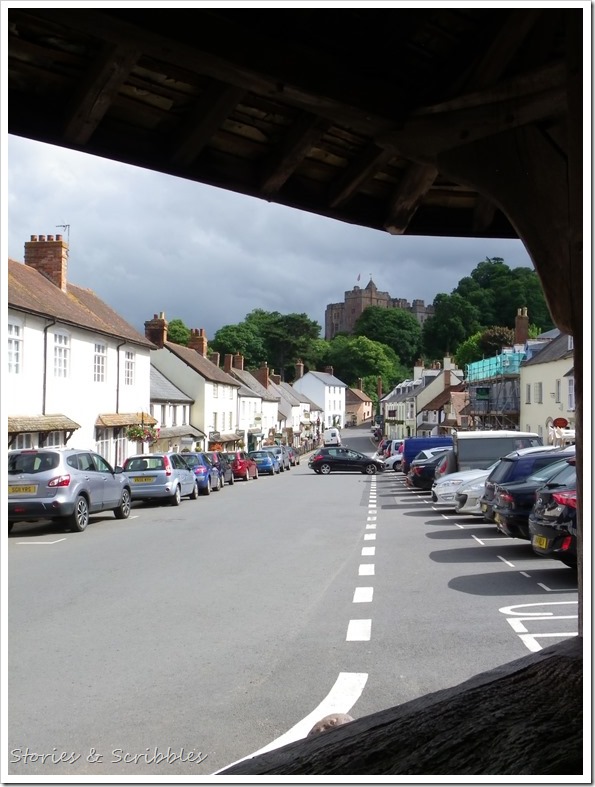

All the walking around Dunster village and the castle had made us hungry. So we stopped for a snack at the Chapel House Tea Room and Craft Shop. I had cheese scones with smoked salmon (I can never resist smoked salmon when it's on the menu) and a cream cheese spread on a bed of crispy salad, washed down with Sicilian Lemonade. It was a simple meal but very delicious.

The Chapel House Tea Room is quite eclectically decorated, with mis-matching chairs in vibrant colours and tablet topped with prints of maps or board games, which I thought were all very charming.

The adjacent gift shop had a number of unusual and wonderfully-crafted items for sale but I contented myself with buying some cards (I can never resist cute stationery either) which were prints of original paintings by artists Rose Eddington and Jess Trotman.
And that brings me to an end of this (rather long but I hope enjoyable) tour of Dunster. I hope you all loved it as much as I did.
Related links














































